Removal Procedure
Caution: Refer to Brake Fluid Irritant Caution in the Preface section.
Notice: Refer to Brake Fluid Effects on Paint and Electrical Components Notice in the Preface section.
- Inspect the fluid level in the brake master cylinder reservoir.
- If the brake fluid level is midway between the maximum full point and the minimum allowable level, then no brake fluid needs to be removed from reservoir before proceeding.
- Raise the vehicle. Refer to Lifting and Jacking the Vehicle in General Information.
- Remove the tire and wheel assembly. Refer to Tire and Wheel Removal and Installation in Tires and Wheels.
- Hand tighten 2 wheel nuts in order to retain the rotor to the hub.
- Push the piston into the caliper bore in order to provide clearance between the linings and the rotor:
- Remove the hose bolt (1) attaching the inlet fitting.
- Plug the caliper housing and brake hose in order to prevent fluid loss and contamination. The cover on the bleeder will work as a plug in the caliper.
- Remove the caliper mounting bolts. It may be necessary to use a wrench in order to hold the brake caliper pin from rotating.
- Remove the 2 guide pins and the guide pin boots from the caliper bracket (1).
- Inspect the guide pins and bores for corrosion.
- Inspect the boots for cuts or nicks.
- If damage to the guide pin boots, the guide pins, or the bores are found, replace the damaged component with new parts when installing the caliper.
If the brake fluid level is higher than midway between the maximum full point and the minimum allowable level, then remove brake fluid to the midway point before proceeding.
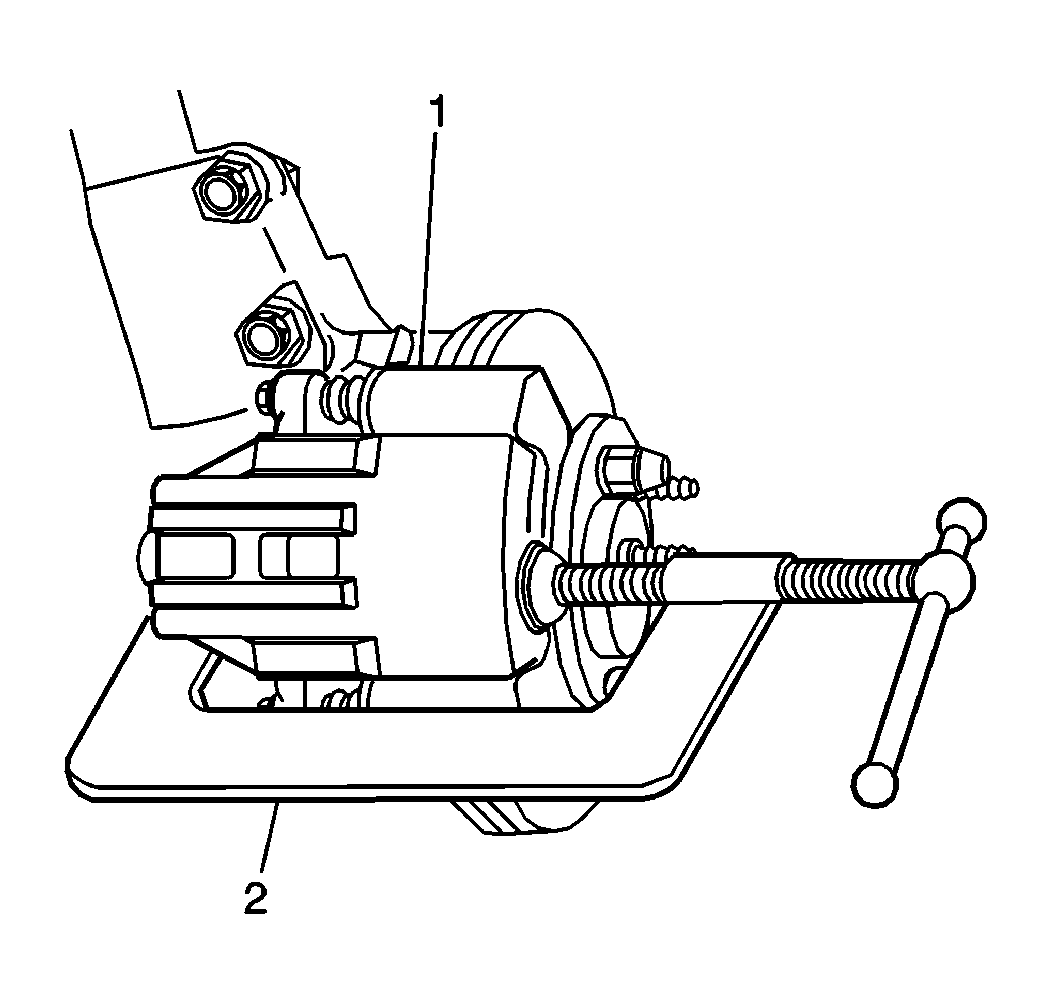
| 6.1. | Install a large C-clamp (2) over the top of the caliper housing and against the back of the outboard pad. |
| 6.2. | Slowly tighten the C-clamp (2) until the piston is pushed into the caliper bore far enough to slide the caliper assembly off the rotor. |
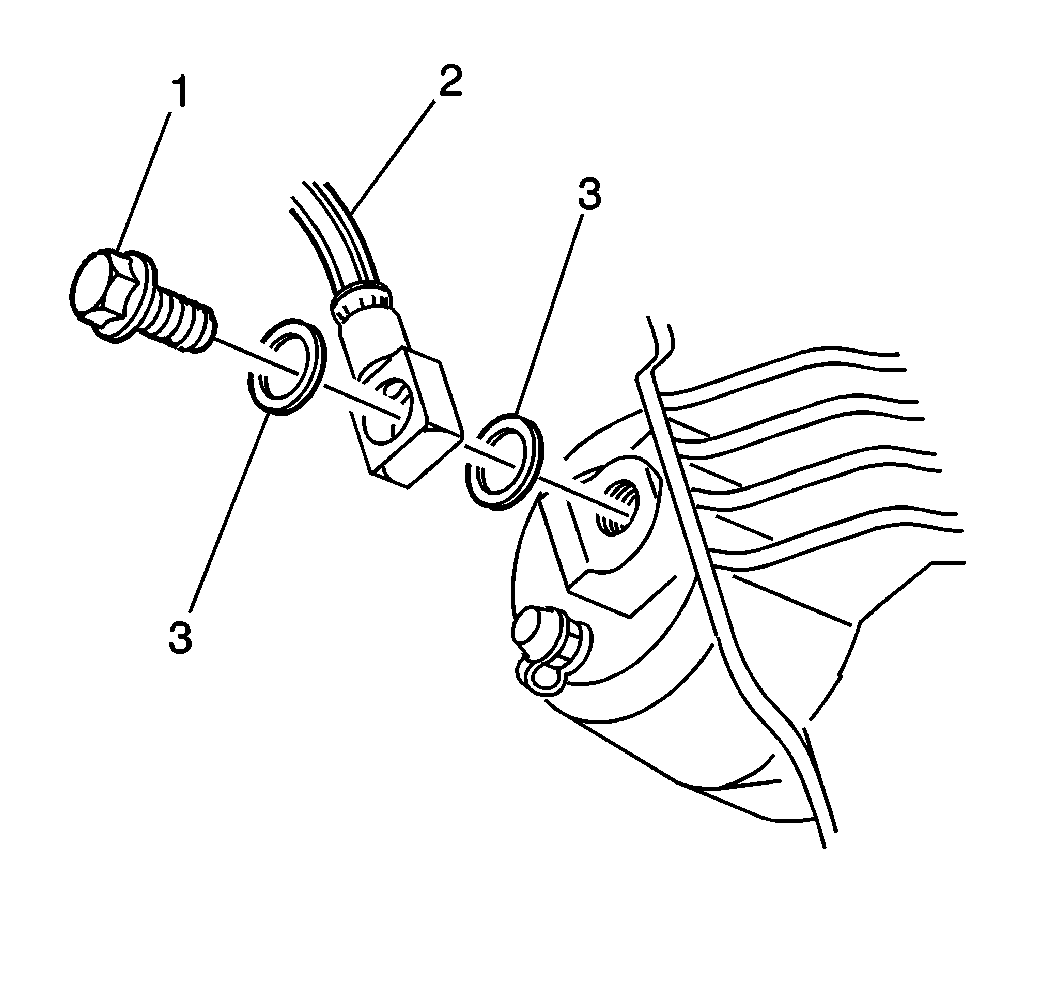
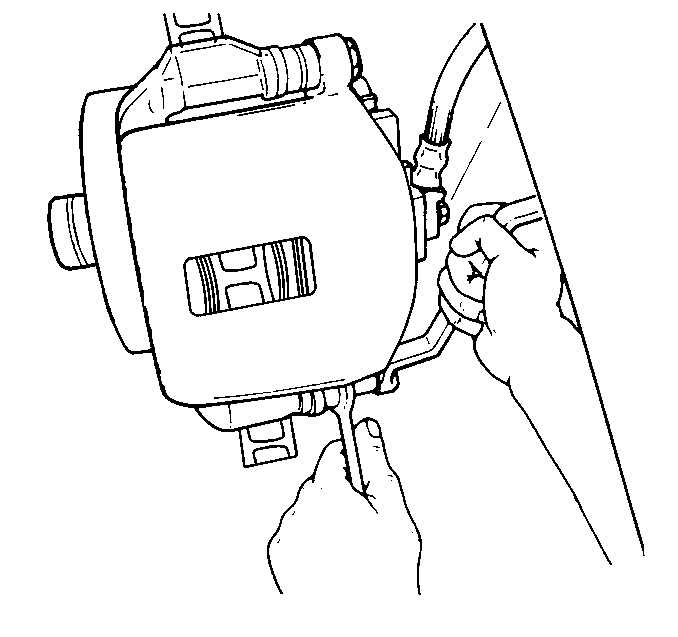
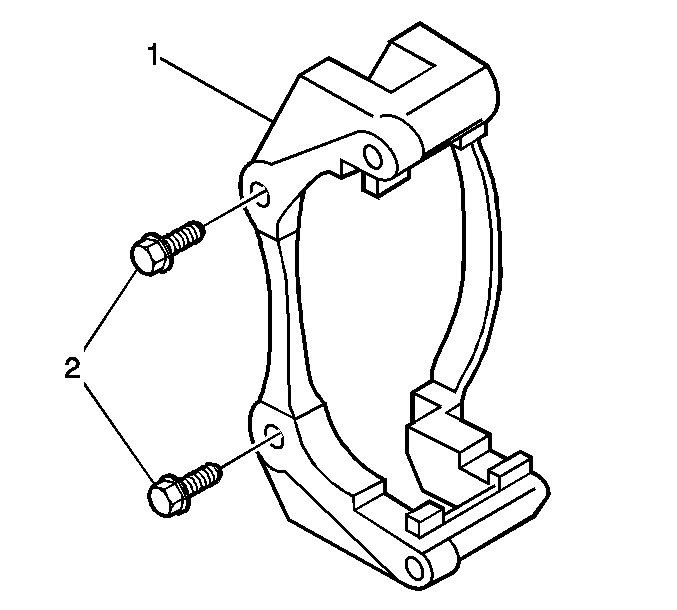
Important: Do not attempt to polish away corrosion.
Installation Procedure
- Lubricate the caliper pins and the boots with GM P/N 18010908 high temperature silicone brake lubricant or equivalent.
- Install the caliper pins and the boots to the caliper bracket (1).
- Install the caliper to the caliper bracket .
- Install the caliper mounting bolts to the caliper bracket.
- Install the brake hose bolt (1) with 2 new sealing washers (3) to the brake hose inlet fitting (2).
- Install the brake hose with the bolt to the brake caliper.
- Remove the 2 wheel lug nuts retaining the rotor to the hub.
- Install the wheel and tire assembly. Refer to Tire and Wheel Removal and Installation in Tires and Wheels.
- Lower the vehicle.
- Fill the master cylinder to the proper level with clean brake fluid. Refer to Master Cylinder Reservoir Filling .
- Bleed the hydraulic brake system. Refer to Hydraulic Brake System Bleeding .
- Inspect the hydraulic brake system for leaks.

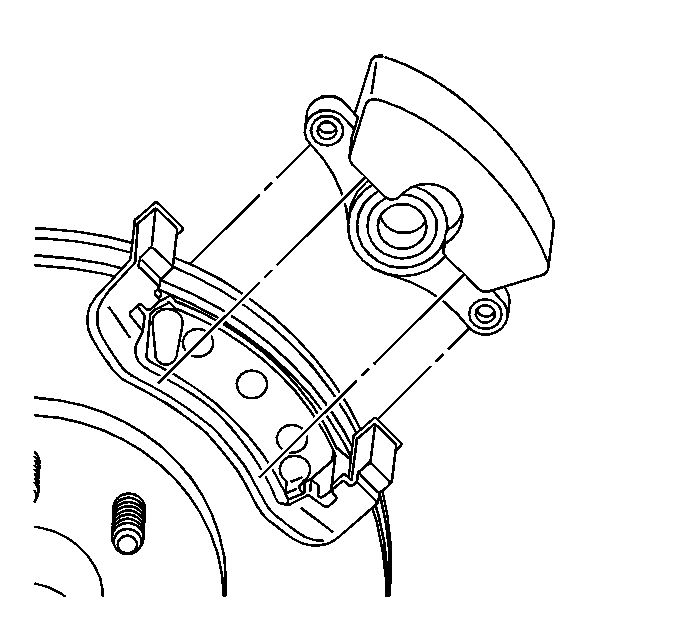
Notice: Use the correct fastener in the correct location. Replacement fasteners must be the correct part number for that application. Fasteners requiring replacement or fasteners requiring the use of thread locking compound or sealant are identified in the service procedure. Do not use paints, lubricants, or corrosion inhibitors on fasteners or fastener joint surfaces unless specified. These coatings affect fastener torque and joint clamping force and may damage the fastener. Use the correct tightening sequence and specifications when installing fasteners in order to avoid damage to parts and systems.
Tighten
Tighten the 2 caliper mounting bolts to 31 N·m (23 lb ft).

Tighten
Tighten the inlet fitting bolt to 50 N·m (37 lb ft).
